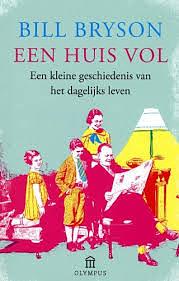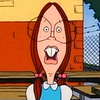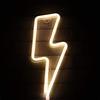Take a photo of a barcode or cover
informative
lighthearted
reflective
relaxing
slow-paced
informative
slow-paced
i aint finishing this. this audiobook must have been one of the original "sleep stories"
Bryson's book is highly detailed, intriguing, and at points laugh out loud funny. For example, speaking of women's incredibly high wigs: "[women] often had to sit on the floor of their carriages or ride with their heads out the windows." His details on things such as building materials, inventions, furniture, and fabrics are fascinating. However most of the wealth of factual information consisted of sobering accounts of the evolution of the comforts of the home. From servants to childhood labor, Bryson gives us a clear idea of all the ways in which life could be unfortunate in the past, and how much of that is connected to the evolution of home life. On his chapter on the nursery he starts by asserting that parents before the modern era cared for their children, but he then goes on only to describe the terrifying and horrible parts of childhood for 19th century children. While talk of workhouses, childhood punishment, and factory labor is obviously necessary, I would have liked to see it balanced with some happy accounts of childhood which also must have existed. Yet, in the end, this emphasis on pain may be Bryson's point. The history of most comforts includes discomfort for someone else, usually a large segment of the population--such as cotton (a miracle fabric at the time of its invention) that fueled Southern American slavery and horrible factory conditions. At the very end of the book Bryson attests that most of the modern comforts we now have are dependent on the rest of the world that lives in poverty, not unlike the relationship between the working and upper classes in 19th century Britain. Comfort, then, is a costly commodity. The biggest disappointment of the book is that Bryson does not talk about people's emotional connections to the vast amounts of material evidence he gives. A running companion history of the emotional life of the house is missing. Luckily I found a book that covered such a topic in Bryson's extensive bibliography: [b:Home: A Short History of an Idea|134218|Home A Short History of an Idea|Witold Rybczynski|http://photo.goodreads.com/books/1223644573s/134218.jpg|129307]. Bryson's book, even with its encyclopedic feeling is, after all, only a starting point.
funny
informative
slow-paced
Interesting anecdotes but a bit of a stretch connecting them to a room in a house.
funny
informative
lighthearted
medium-paced
funny
informative
slow-paced
It's hard to know what to say about this fascinating, sprawling work. On the one hand, it's chock full of interesting facts -- I found myself highlighting frequently to save notes to share with my husband. On the other hand, most of the information seems only tangentially related to the unifying theme, and at times seems almost a stream-of-consciousness conglomeration of Bryson's research.
The concept behind the book is that Bryson wanted to explore the origins of various elements of home life -- why are certain objects and habits common to our homes while others aren't? The book does, eventually, get at these things, but it covers far more biographical and historical ground in the meantime than is really necessary to explore these aspects of the home.
The structure of the book takes us through each room of Bryson's home, a former rectory in Norfolk, England, and uses the room as a jumping-off point to explore some aspect of private life. In some cases this makes sense, such as exploring the history of bathing in the bathroom and the history of sex in the bedroom. But the chapters then ramble -- an invention of an object leads into a thorough biography of the inventor, which mentions some particular interest of his, which leads into a detailed history of that pastime, and so on.
By the end of the book the pretense of any relationship to the rooms of a house seems completely abandoned, as the last chapter on "the attic" ranges from Charles Darwin to Stonehenge without a single mention of an attic or anything in it.
So if you're interested in reading a history of Britain (and occasionally America) through the ages, with a multitude of biographies of some of its most influential people, then you will love this book. If you enjoy a collection of interesting facts with no clear sense of organization, you will find plenty of things to hold your attention this book.
Just don't expect a straightforward exploration of the origins of items in your home.
The concept behind the book is that Bryson wanted to explore the origins of various elements of home life -- why are certain objects and habits common to our homes while others aren't? The book does, eventually, get at these things, but it covers far more biographical and historical ground in the meantime than is really necessary to explore these aspects of the home.
The structure of the book takes us through each room of Bryson's home, a former rectory in Norfolk, England, and uses the room as a jumping-off point to explore some aspect of private life. In some cases this makes sense, such as exploring the history of bathing in the bathroom and the history of sex in the bedroom. But the chapters then ramble -- an invention of an object leads into a thorough biography of the inventor, which mentions some particular interest of his, which leads into a detailed history of that pastime, and so on.
By the end of the book the pretense of any relationship to the rooms of a house seems completely abandoned, as the last chapter on "the attic" ranges from Charles Darwin to Stonehenge without a single mention of an attic or anything in it.
So if you're interested in reading a history of Britain (and occasionally America) through the ages, with a multitude of biographies of some of its most influential people, then you will love this book. If you enjoy a collection of interesting facts with no clear sense of organization, you will find plenty of things to hold your attention this book.
Just don't expect a straightforward exploration of the origins of items in your home.
informative
medium-paced



